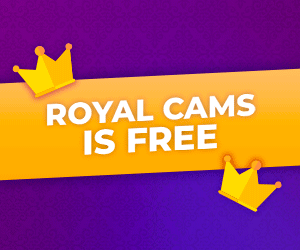You’re sitting at your kitchen table, scrolling through LinkedIn for the third time today. Another post pops up: “Just hit six figures freelancing!” accompanied by a photo of someone grinning on a beach with a laptop. The caption says they quit their 9-to-5 two years ago. You glance at your own résumé—a patchwork of entry-level jobs and pandemic pivots—and wonder, Could I really do this? The answer is yes, but not by following generic “follow your passion” advice. The freelance landscape in 2025 isn’t about luck or talent; it’s about strategic hustle, AI fluency, and leveraging tools that didn’t exist five years ago. Here’s how to start from zero, even if your current skills feel irrelevant.
Forget “Passion.” Start With “Proof of Concept”
The biggest myth about freelancing is that you need a polished portfolio or a decade of expertise. What you actually need is proof that someone will pay you for a service. Start by identifying a bridge skill—something you already do informally that solves a problem.
Take Jamie, a former barista who began freelancing in 2024. She didn’t pitch herself as a “coffee consultant.” Instead, she noticed cafes in her city struggling with TikTok marketing. She’d casually posted latte art videos that went viral, so she cold-messaged local shops: “I’ll create 3 TikTok reels for free. If they bring in customers, we can talk payment.” Two shops agreed. One reel hit 500k views, and within months, Jamie was charging $500 per video. Her bridge skill wasn’t coffee mastery; it was understanding social media algorithms through trial and error.
Your bridge skill could be anything: organizing spreadsheets for your hiking club, designing birthday invites, or even mediating family disputes. The key is to frame it as a service, not a hobby.
The AI Apprenticeship
In 2025, AI tools like ChatGPT-5 and Midjourney 4.0 aren’t just for pros—they’re the ultimate equalizers. Use them to close your skill gaps fast.
For example, say you want to freelance as a copywriter but have no formal training. Feed client briefs into AI to generate draft content, then refine it with your unique voice. Tools like Copy.ai or Jasper offer free trials; use them to create sample work. Join AI-powered platforms like Upwork’s Skill Builder, which pairs beginners with micro-projects to train algorithms while you learn.
But here’s the catch: Clients are wary of AI-generated sludge. Differentiate by adding a “human layer”—personal anecdotes, niche research, or cultural nuance AI can’t replicate. Maria, a freelance translator, uses AI to handle bulk text but manually inserts local idioms for authenticity. “Clients don’t care if I use tech,” she says. “They care that their Spanish audience feels understood.”
The $0 Portfolio Hack
No clients? No problem. Create “spec work” for fictional brands or volunteer for nonprofits.
Designers can mock up rebrands for struggling small businesses, then email the owners: “I redesigned your logo pro bono. If you like it, I’d love to discuss other projects.” Writers can craft blog posts for local charities, building clips while networking.
In 2025, platforms like Fiverr and Contra let you showcase AI-assisted projects without upfront costs. Use AI-generated visuals or copy to flesh out your portfolio, but always disclose your process. Transparency builds trust in an era of deepfake skepticism.
The Cold Outreach Formula That Works
Most freelancers fail at outreach because they lead with desperation: “I’m new and looking for work!” Instead, lead with curiosity and collaboration.
Research companies or creators you admire, then send this email:
Subject: Quick question about [specific project/content]
Hi [Name],
I noticed your recent [project/post] about [topic]. I experimented with [related idea] and wondered if you’d like to see the results? No pressure—just thought it might spark something. Either way, keep up the great work!
– [Your Name]
Attach a one-page PDF with your idea (e.g., a social media template, a blog outline, a UX tweak). This positions you as a problem-solver, not a beggar.
Alex, a 24-year-old freelancer, used this method to land his first client. He noticed a eco-brand’s website had broken links, ran a free audit with Screaming Frog, and sent the fixable errors in a doc. The CEO hired him for ongoing SEO work. “I spent three hours on the audit and made $3,000 that month,” he says.
Price Yourself Like a Pro (Even If You Feel Like a Fraud)
New freelancers undercharge, terrified of rejection. But low rates attract nightmare clients. Instead, use value-based pricing.
Ask potential clients: “What’s the ROI you want from this project?” If a business owner says, “I need a website that converts visitors into leads,” estimate how many leads your work could generate and take a percentage. For example: “My fee is $1,500, which is 10% of the estimated 150 leads this site could bring monthly.”
No experience? Offer a pilot project at a flat rate: “Let’s start with one blog post/a single design/a week of social posts. If it drives results, we’ll discuss a long-term rate.” This reduces risk for clients and lets you prove your worth.
The Invisible Backbone: Systems
Freelancing isn’t just about doing the work—it’s about managing it. Use free tools to automate chaos:
- HoneyBook for contracts and invoices
- Trello for project tracking
- Wave for accounting
- Calendly to dodge scheduling hell
Set office hours even if you’re working from bed. Post them on your website: *“Available for calls Monday-Thursday, 10 a.m.-2 p.m. ET.”* This trains clients to respect your time.
Leverage the “Uber-ization” of Niches
In 2025, hyper-specialization wins. Clients don’t want a “graphic designer”—they want a “Canva-to-WordPress conversion expert for vegan coaches.” Find niches emerging from trends:
- AI ethics auditing: Businesses need help ensuring their AI tools aren’t biased or invasive.
- Micro-influencer ghostwriting: Tiny accounts (1k-10k followers) now pay for captions that sound authentically unpolished.
- Resume storytelling for career pivoters: With AI screening 90% of applications, human-centric narratives cut through.
Join niche communities on Geneva or Discord to spot these needs. For example, “Climate Tech Founders” or “Solopreneur Parents” groups often post problems begging for solutions.
The Feedback Loophole
No experience means no testimonials, right? Wrong. Barter your services for video reviews.
Message small biz owners: *“I’ll [design your newsletter/write product descriptions] for free in exchange for a 30-second testimonial.”* Most agree because it’s low risk. Edit the clips into a reel on your website—social proof matters more than years on a résumé.
When to Quit (Your Mindset)
Freelancing isn’t a fairy tale. Some months, you’ll feast; others, you’ll stress-swatch Netflix. The key is to ditch the “I need to replace my full-time income now” panic.
Start part-time. Dedicate 10 hours a week to freelancing while keeping your day job or gig work. Use AI tools to halve your workload—e.g., Otter.ai for transcribing client calls, Canva for instant designs.
The 2025 Edge: Web3 and Micro-Credentials
Blockchain isn’t just for crypto bros. Platforms like Braintrust and DAOjobs connect freelancers with Web3 projects hungry for newcomers. No coding? No problem. Many need writers, community mods, or meme creators.
Earn micro-credentials via Coursera or LinkedIn Learning in hours, not months. Badges like “AI Content Optimization” or “NFT Community Management” signal you’re future-ready, even without a degree.
The Real Secret
Freelancing in 2025 isn’t about being the best—it’s about being the most adaptable. The barista-turned-Tikok-pro, the accountant-turned-AI-ethics-nerd, the parent-turned-resume-whisperer—they all succeeded by repackaging what they already had.
So close LinkedIn, open a doc, and answer this: What’s one thing I do that others casually compliment? That’s your starting line. The rest is just hitting refresh until the world catches up.







